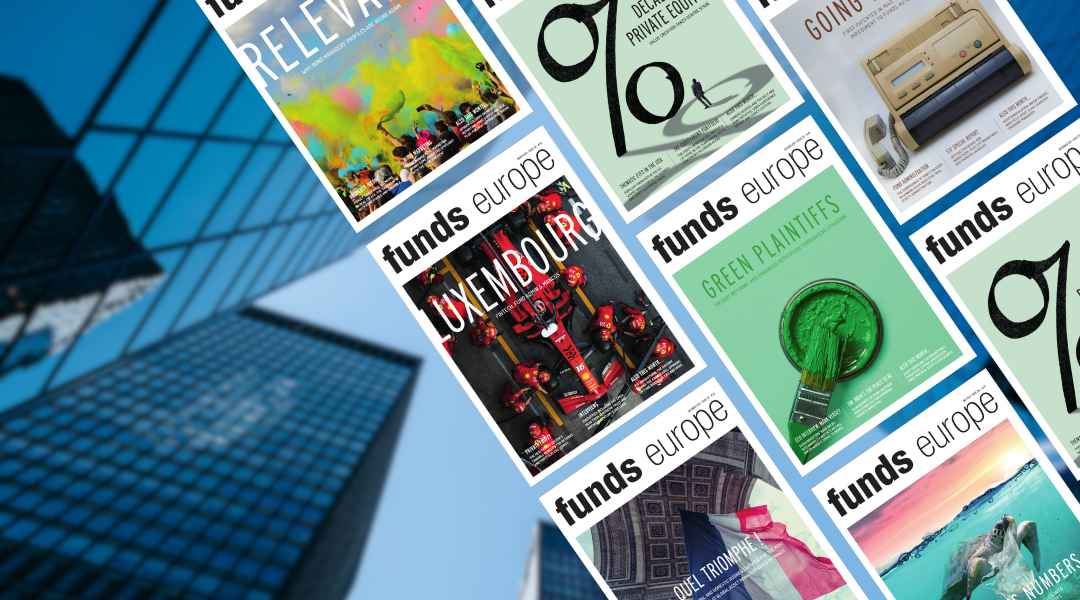 The China Plus One narrative might affect “the world’s factory” and give opportunities for India and other countries well-placed to assume part of the global supply burden. Written by Natalya Zeman, equity investment director, Capital Group.
The China Plus One narrative might affect “the world’s factory” and give opportunities for India and other countries well-placed to assume part of the global supply burden. Written by Natalya Zeman, equity investment director, Capital Group.
Apple’s recent announcement that it will manufacture the latest iPhone model in India has added further fuel to a growing China Plus One narrative. This is where global businesses are avoiding investing solely in China to re-orient and diversify their supply chains. From an investment perspective, it will be important to gauge how far and how quickly this shift might affect “the world’s factory”, as well as the opportunity it potentially opens for India and other countries well-placed to assume part of the global supply burden.
Opportunities for India?
India is seen as an obvious beneficiary of this trend. Rajeev Chandrasekhar, the country’s Minister of State for Electronics and IT, recently outlined its desire to become a trusted global partner and part of Global Value Chains (GVCs) for logic semiconductors, chipsets and other electronic products. Speaking at the Bengaluru Technology Summit in November 2022, Chandrasekhar said electronics and semiconductor products are nearing a US$1.5 trillion industry. Stressing India’s growing presence, he noted that 92% of the mobile devices sold in the country were imported back in 2014, while in 2022, 97% were manufactured in India.
In 2014, the minister stated that the country’s electronics ecosystem, comprising manufacturing, designing, innovation and production, was worth around US$10 billion, but this had grown to US$75 billion in 2022, and the country has set a target to increase production in the sector to US$300 billion by 2025. As such, we are currently talking to several India-based companies to understand how far these businesses might benefit from changing geopolitical tides.
India’s government is looking to encourage manufacturing and has announced production-linked incentive schemes (PLIs) for different sectors and increased import tariffs on certain products and components. The first scheme is for the manufacture and assembly of mobile phones, and this has received a good response from businesses. For example, analysts estimate Apple will turn India into a global iPhone manufacturing hub by 2025. While the nation currently accounts for near to 5% of global iPhone 14 production, it is estimated by analysts that manufacturing capacity will expand and see India responsible for the production of 25% of all iPhones by 2025.
Key for India, as it has been for China over the years, is the sheer scale of potential domestic demand, with a huge local market making the decision to set up manufacturing hubs in the country easier. This is why India is a different proposition to other options such as Indonesia, Thailand and Vietnam, which are dwarfed in population terms by China. In contrast, India is currently the world’s second most populous nation (home to 1.417 billion people in 2022, compared with China’s 1.426 billion) but could take the top spot as early as this year, according to the UN’s 2022 World Population Prospect report. India’s consumer base has also been growing fast, with the country set to overtake US smartphone demand in the next two years, for example.
Too soon to count out China
From a China perspective, the Plus One effect will happen gradually despite noisy headlines. Indeed, there are several factors to keep in mind for anyone expecting a rapid shift in supply-chain structures.
Firstly, foreign direct investment (FDI) continues to be strong in China and is more than six times the level in India at present. China accounted for 19% of global FDI inward flow in 2021 compared to just 3% for India.
Secondly, critics point to rising labour costs in China as a reason for companies to look elsewhere – and data bears the first part of that out. But labour costs are actually rising faster in India at present, rising 55% from 2010 to 2021, compared to 37.9% in China over the same period.
Lastly, infrastructure will be a key factor. India, and many of the other emerging nations that could profit from the Plus One effect, still need to build out many of the roads and key infrastructure that China already has in this space over the coming decade. In India specifically, spending in this space has increased over recent years, but it will take time to reach the levels required to compete with the likes of China.
Looking ahead
Overall, looking to the rest of the 2020s and beyond, China looks set to lose its share of global trade, and India will likely gain, as will countries such as Vietnam, Thailand, Mexico and so on. But it is a mistake to count China out just yet – its existing manufacturing infrastructure, logistics facilities, skilled labour and supply chains make the country too useful to walk away from in a meaningful way anytime soon.
However, while it is still early days, the set-up of India today is arguably better than China 20 years ago. India’s political regime is laser-focused on economic development and not afraid of taking short-term pain. They’ve also cleaned up the banking and real estate sectors, increased infrastructure investment, and also reduced bureaucracy and red tape to make the country more business-friendly.
©2023 funds global asia
 The China Plus One narrative might affect “the world’s factory” and give opportunities for India and other countries well-placed to assume part of the global supply burden. Written by Natalya Zeman, equity investment director, Capital Group.
Apple’s recent announcement that it will manufacture the latest iPhone model in India has added further fuel to a growing China Plus One narrative. This is where global businesses are avoiding investing solely in China to re-orient and diversify their supply chains. From an investment perspective, it will be important to gauge how far and how quickly this shift might affect “the world’s factory”, as well as the opportunity it potentially opens for India and other countries well-placed to assume part of the global supply burden.
The China Plus One narrative might affect “the world’s factory” and give opportunities for India and other countries well-placed to assume part of the global supply burden. Written by Natalya Zeman, equity investment director, Capital Group.
Apple’s recent announcement that it will manufacture the latest iPhone model in India has added further fuel to a growing China Plus One narrative. This is where global businesses are avoiding investing solely in China to re-orient and diversify their supply chains. From an investment perspective, it will be important to gauge how far and how quickly this shift might affect “the world’s factory”, as well as the opportunity it potentially opens for India and other countries well-placed to assume part of the global supply burden.
 At times like these, HSBC Asset Management easily pivots towards emerging markets.
At times like these, HSBC Asset Management easily pivots towards emerging markets.
 A comprehensive, cost-effective, and transparent currency overlay hedging solution is crucial to mitigate FX exposure risks in the complex landscapes of Japan and China's FX markets, explains Hans Jacob Feder, PhD, global head of FX services at MUFG Investor Services.
A comprehensive, cost-effective, and transparent currency overlay hedging solution is crucial to mitigate FX exposure risks in the complex landscapes of Japan and China's FX markets, explains Hans Jacob Feder, PhD, global head of FX services at MUFG Investor Services. The world is transitioning from an era of commodity abundance to one of undersupply. Ben Ross and Tyler Rosenlicht of Cohen & Steers believe this shift may result in significant returns for commodities and resource producers over the next decade.
The world is transitioning from an era of commodity abundance to one of undersupply. Ben Ross and Tyler Rosenlicht of Cohen & Steers believe this shift may result in significant returns for commodities and resource producers over the next decade. Ross Dilkes, fixed income portfolio manager at Wellington Management, examines the opportunities and risks for bond investors presented by the region’s decarbonisation agenda.
Ross Dilkes, fixed income portfolio manager at Wellington Management, examines the opportunities and risks for bond investors presented by the region’s decarbonisation agenda. Shareholders in Japan no longer accept below-par corporate governance standards. Changes are taking place, but there are still areas for improvement, says Tetsuro Takase at SuMi Trust.
Shareholders in Japan no longer accept below-par corporate governance standards. Changes are taking place, but there are still areas for improvement, says Tetsuro Takase at SuMi Trust. Robert St Clair, head of investment strategy at Fullerton Fund Management, explores the reasons investors should be paying attention to the rising demand for healthcare in China.
Robert St Clair, head of investment strategy at Fullerton Fund Management, explores the reasons investors should be paying attention to the rising demand for healthcare in China.


